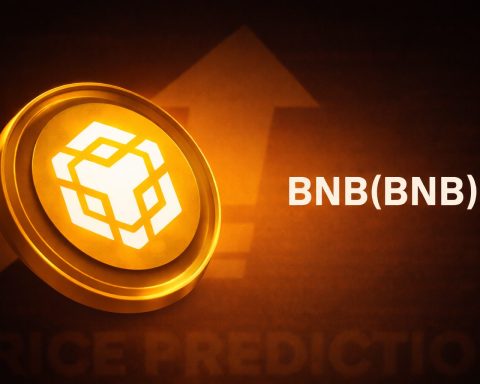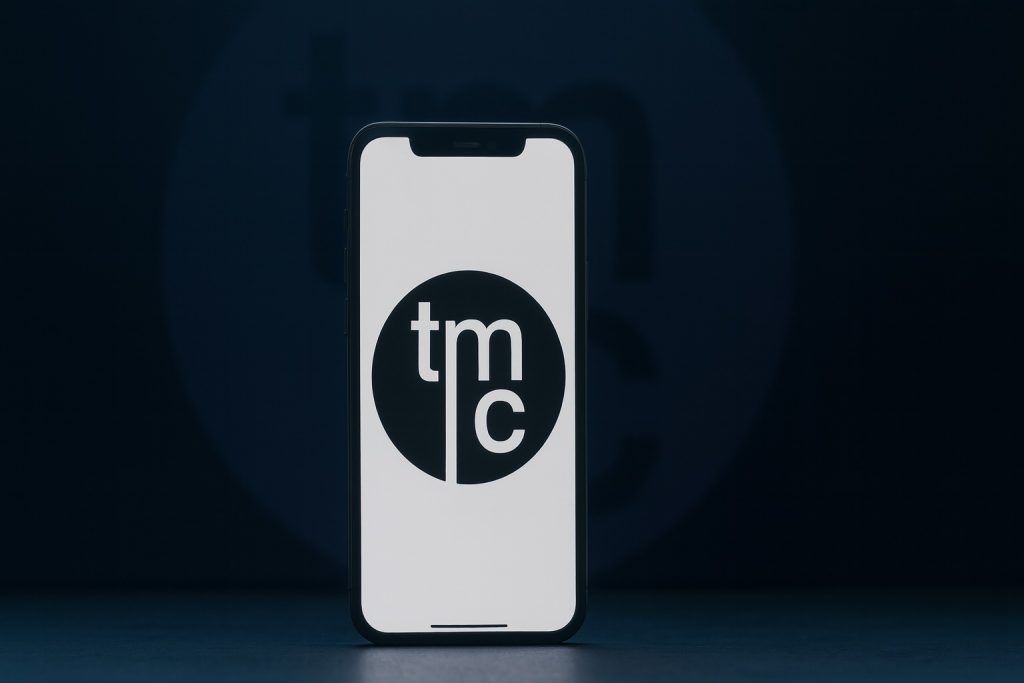- Howard Marks & Buffett: Veteran investor Howard Marks celebrated 35 years of famous market memos (praised by Warren Buffett) on Oct. 13, 2025. Marks now cautions that today’s frenzy – especially around AI – is “a great precursor for the kind of enthusiasm that sometimes leads to bubbles” [1] [2]. He points to “soaring valuations, AI hype, and heavy reliance on mega-cap tech” as warning signs [3].
- Global Market Slide: Escalating U.S.-China trade tensions triggered a global sell-off. On Oct. 10 the S&P 500 plunged 2.7% and the Nasdaq Composite 3.6% [4] – Wall Street’s worst drop since April – as even tech giants swooned. By Oct. 13 safe-havens surged: gold hit a record $4,096.35/oz (up 56% YTD) and silver $52.00 [5]. (Bank of America now forecasts gold to reach ~$5,000 by 2026 [6].)
- AI Mania & Caution: The late-Sept AI rally featured Nvidia’s announcement of a $100 billion investment in OpenAI, sending NVDA shares to new highs [7]. But strategists warn the boom may be overheated. As Reuters Breakingviews puts it, trillions spent on AI “may not yield commensurate returns,” and could spark an “AI investment bubble” [8]. MIT research cited by Breakingviews finds 95% of firms have yet to see ROI from AI [9], and JPMorgan data show today’s sky-high valuations often precede poor 10-year returns [10]. In short, “the market is not going to shoot to the moon” without real earnings to back it up [11].
- Investor Picks – Big & Small: Both retail and institutional investors are sifting for real AI winners. Charles Schwab’s Joe Mazzola notes clients are now “focus[ing] on companies that have proven business models and solid revenue streams tied to AI” [12]. In September Schwab customers were net-buyers of Nvidia, Oracle, Palantir (and upstart CoreWeave), while trimming AMD and Broadcom positions [13]. PE titan Orlando Bravo warns AI valuations already look “frothy,” likening parts of the sector to bubble territory [14]. FG Nexus CEO Maja Vujinovic urges picking AI stocks with “real-world use cases, meaningful scale, [and] tangible utility” [15], rather than chasing hype alone.
Howard Marks: 35 Years of Memos and Modern Warnings
Howard Marks’ famous memos have been required reading on Wall Street for decades – so much so that Buffett reportedly gave them to protégés. In reflecting on his career, Marks underscores that market psychology repeats. In a podcast and memo earlier this year he warned that the unbridled enthusiasm for AI – a “thing with no historical base” – is precisely the kind of “thrill of the new thing and fear of missing out” that often ends in a bubble [16]. He emphasizes caution: today’s lofty tech valuations, mixed with geopolitical uncertainty, echo the dot-com era’s excesses. As Marks paraphrases JP Morgan research, today’s rich prices “often precede lackluster returns over the following decade.” Investors, he says, would be wise not to ignore those warning signs [17].
Even as he commemorates 35 years of memos (with no paywall, in contrast to most), Marks is blunt about unpredictability. He acknowledges the game changed – AI and new tech mean there’s “no limits” to hype – but his message is timeless: history suggests we should temper our euphoria. Analysts like him argue that if enough investors pile into the hot new story, the eventual correction can be painful. In short, even legends of value investing like Marks and Buffett are urging restraint amid the euphoria.
AI Fever vs. Fundamentals – A Turning Point?
September’s AI news reignited a speculative rally: Nvidia announced a $100 billion funding plan for OpenAI, and big tech on Sept. 29 rode the wave (NVDA +2%, Microsoft +0.6%) [18]. Memory chipmakers like AMD (on Zen6 news) and storage firms surged as analysts predicted an “AI-driven cycle” [19]. Chinese tech joined in: Alibaba jumped ~10% after unveiling its latest AI model [20]. Even global funds poured back into tech – roughly $28.4 billion flowed into equity funds globally in the week to Sept. 24 [21], snapping weeks of outflows. Wall Street analysts responded by ratcheting up targets on AI leaders (Barclays now calls NVDA its “most attractive” AI play with a $240 price target; Morgan Stanley made MSFT a Top Pick) [22].
But cracks emerged quickly. Within days, high-profile executives and reports voiced concern. Orlando Bravo (Thoma Bravo) told CNBC that segments of the AI market are “frothy” and resemble a bubble [23]. An in-depth report questioned whether Oracle’s cloud business was being overvalued as an AI play. Retail investors, too, are showing caution: Schwab’s Joe Mazzola notes clients are sticking with companies that prove they can monetize AI (like NVDA, ORCL, PLTR) and ditching ones that might be riding the hype (they lightened AMD and Broadcom in Sept.) [24]. His assessment: “The clear line now is who’s actually monetizing AI… [Investors are] focusing on proven business models and solid revenue streams tied to AI rather than just hype.” [25].
TechStock²’s analysis points out that market indicators are warning of overheating. A Reuters Breakingviews piece cited by TS2 highlights a widening gap: trillions of AI capex might not yield proportional profits [26]. Indeed, MIT research (via Breakingviews) found 95% of companies surveyed saw no ROI yet from their AI investments [27]. As TS2 sums it up, current valuations suggest “the rally rests largely on future promises” [28], and some strategists caution that without earnings to back them, the S&P and Nasdaq “are not going to shoot to the moon.” [29]. In other words: the game is only just beginning – and investors who stay in will likely be very selective.
The Crash Arrives: Trade Fears and Safe Havens
Just as the AI euphoria peaked, a cascade of geopolitical shocks reversed it. On Oct. 10 President Trump abruptly announced 100% tariffs on Chinese imports and China retaliated by expanding controls on critical exports (like rare-earth minerals). The result was immediate chaos: “markets plunged globally” in a one-day rout [30]. On that Friday the S&P 500 fell 2.7% (-182 points to 6,552) and the Nasdaq lost 3.6% (-820 pts to ~22,204) [31] – its worst one-day drop since April. Tech stocks were hardest hit: chipmakers AMD and Qualcomm plunged ~7%, and U.S.-listed Chinese giants (Alibaba, Baidu) slid ~5% [32].
Investors fled to safety. U.S. 10-year Treasury yields tumbled (bond prices jumped), reflecting a rush out of risk and into government debt [33]. Gold and silver, classic safe havens, surged: gold traded near $4,000/oz (close to its new record) and silver climbed toward $52 [34]. Commodities analysis at Saxo Bank notes silver hit a decade-high $51.7 and gold $4,078 on Oct. 13, driven by worries over the U.S.–China trade spat, Fed rate-cut bets, and even the U.S. government shutdown [35]. CPM Group’s Jeffrey Christian aptly summarized the mood: “Rises in gold and silver prices happen when investors are concerned about the state of the world” [36] – a fitting description of current jitters. Meanwhile, oil bucked the trend somewhat: after earlier sliding on war-risk, prices rebounded modestly on Oct. 13 (Brent around $65.5/bbl, WTI ~$61.7) once OPEC+ signaled only a small output hike [37]. (However, analysts warn ample global supply and weak demand should keep a cap on oil’s rally [38] [39].)
One week earlier, U.S. stocks had been at fresh highs (the S&P and Nasdaq peaked on Oct. 9 [40]). The swift reversal – fueled by tweetstorms and tariff shocks – underscores the fragility beneath the surface. Volatility spiked sharply: the VIX “fear index” hit multi-month highs on Oct. 10 [41]. In Asia, markets also retreated: Hong Kong’s Hang Seng fell ~1.7% and China’s CSI 300 index ~2.0% on Friday [42], even as Chinese stocks had been buoyed earlier by firm export data. In sum, what started as an AI-fueled, rate-cut-driven rally abruptly pivoted into a classic risk-off market on trade war fears and policy uncertainty.
StoneX Group: An Under-the-Radar Giant Emerges
Beyond tech and metals, one standout story is StoneX Group Inc (NASDAQ: SNEX). StoneX – a Chicago-based financial-services firm – provides global market access for commodities, securities and FX trading (it also owns futures house R.J. O’Brien and betting platform City Index). CNBC (via analyst Jeff Hirsch) recently highlighted StoneX as a “ground-floor” opportunity, due to its strong presence in undercovered markets. StoneX has been aggressively expanding: in April 2025 it agreed to acquire R.J. O’Brien (a major U.S. futures brokerage) and in mid-2025 inked a deal to buy Intercam’s U.S. wealth-management arm [43]. These moves boost its foothold in commodity/FX clearing and execution.
StoneX’s stock has responded: SNEX trades around $95–96 (as of mid-Oct) with a 52-week high near $107 [44]. That’s up from lows in 2023–24 and reflects solid revenue growth across its operations. (For reference, SNEX’s market cap is still under $2 billion, well under some large Wall Street brokers despite having niche advantages.) Analysts note that StoneX offers diversified exposure to commodity markets and currency flows – from grain and energy to precious metals – and benefits when volatility or geopolitical events (like trade wars) drive trading volumes. For example, StoneX’s client Rediriva, R.J. O’Brien, and FX desks all see higher fees when markets swing. With commodity prices (gold, oil, agri) now high and trade disruptions possible, StoneX stands to gain trading fees – a reason why it drew attention from CNBC’s coverage.
Stock snapshot: SNEX is near its all-time highs. GuruFocus reports the stock around $95.84 with a 52-week range $55.85–$106.98 [45]. Importantly, StoneX does not pay a dividend (it reinvests in growth) [46]. The company’s next earnings (late Oct 2025) will be watched for signs of continued expansion. Given its small following, any upward movement in SNEX could get amplified by new money noticing the story.
Outlook: Analysis & Forecasts
Analysts & Targets: Beyond target upgrades on tech stocks, forecasters are bullish on metal and commodity themes. Bank of America now pegs gold at $5,000/oz by end-2026 [47]. Societe Generale sees silver headed to $65 in the same timeframe [48]. Morgan Stanley has reiterated broad AI plays (MSFT a Top Pick with a $625 target [49]), and UBS and others continue to tout chipmakers even as they caution on cyclicality. By contrast, many Wall Street strategists are recommending caution. Some suggest rotating from richly valued growth names into value or cyclicals. For example, the Bundesbank and other major bank reports note that current equity prices “require risk appetite” that could ebb if macro data disappoints.
Stock Market Forecast: The immediate outlook is choppy. With trade tensions and political risks high, volatility is likely to stay elevated. However, many analysts reckon long-term bull markets can resume if the Fed does start cutting rates in 2026 as expected. Indeed, futures markets now price nearly a 100% chance of a 25bp Fed cut by Dec 2025 [50]. If that happens, it could underpin another leg up for stocks and risk assets. Yet this hinges on inflation cooling: U.S. core inflation (PCE index) is forecast to ease to ~3% by year-end [51]. Should inflation remain stubborn, the Fed may delay easing, keeping bonds and stocks under pressure.
Investor Takeaways: In this era of rapid change, experts urge balanced portfolios. That means acknowledging both the promise of new tech and the perils of overvaluation. Already, legendary investors are publicly rooting out investments they deem too frothy. Buffett, for one, recently reminded investors that “the market is a weighing machine” – implying that quality matters even when momentum is strong. Here are some suggested strategies from this week’s analysis: diversify into solid commodity plays (like precious metals, agriculture), keep some liquidity to hedge sudden shocks, and if you do own big tech/AI names, size positions prudently. Some strategists even recommend profit-taking on recent winners or setting stop-losses given the turmoil.
Expert Voices: As TS2 analyst Mateusz Kaczmarek concludes, the late-Sep AI-triggered rally “lifted markets” but was matched by cautionary moves from regulators and Fed signals [52]. In the end, long-term returns will depend on how AI and trade dynamics actually play out. For now, even experts who love innovation are sounding alarms. In Howard Marks’ words: “You should proceed with caution.” [53]
Sources: This report draws on recent CNBC interviews and commentary, expert research (e.g. TechStock²), and current market data. Key references include CNBC’s latest articles (Howard Marks, StoneX, AI investing), Reuters market news, TS2.tech analysis, and financial news outlets [54] [55] [56] [57] [58] [59]. All data (stock prices, forecasts) are as of mid-Oct 2025.
References
1. www.benzinga.com, 2. www.benzinga.com, 3. www.benzinga.com, 4. ts2.tech, 5. www.reuters.com, 6. www.reuters.com, 7. ts2.tech, 8. ts2.tech, 9. ts2.tech, 10. www.benzinga.com, 11. ts2.tech, 12. www.tradealgo.com, 13. www.tradealgo.com, 14. www.tradealgo.com, 15. www.tradealgo.com, 16. www.benzinga.com, 17. www.benzinga.com, 18. ts2.tech, 19. ts2.tech, 20. ts2.tech, 21. ts2.tech, 22. ts2.tech, 23. www.tradealgo.com, 24. www.tradealgo.com, 25. www.tradealgo.com, 26. ts2.tech, 27. ts2.tech, 28. ts2.tech, 29. ts2.tech, 30. ts2.tech, 31. ts2.tech, 32. ts2.tech, 33. ts2.tech, 34. ts2.tech, 35. www.home.saxo, 36. www.reuters.com, 37. www.reuters.com, 38. www.reuters.com, 39. www.reuters.com, 40. ts2.tech, 41. ts2.tech, 42. www.home.saxo, 43. www.gurufocus.com, 44. www.gurufocus.com, 45. www.gurufocus.com, 46. www.gurufocus.com, 47. www.reuters.com, 48. www.reuters.com, 49. ts2.tech, 50. www.reuters.com, 51. www.reuters.com, 52. ts2.tech, 53. www.benzinga.com, 54. www.benzinga.com, 55. www.tradealgo.com, 56. www.reuters.com, 57. www.home.saxo, 58. ts2.tech, 59. www.gurufocus.com







